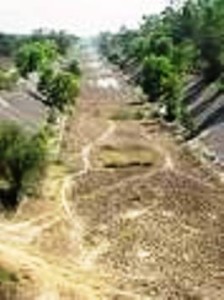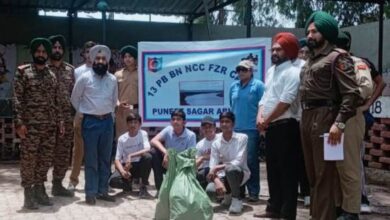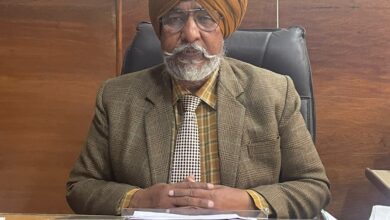Punjab & Haryana – Save Your Links over Satluj Yamuna Link
Merely making Acts would not suffice; there is a need to have permanent tribunal for resolving all such issues with expertise members for everlasting solution…
Punjab & Haryana – Save Your Links over Satluj Yamuna Link
There are more than 7 billion people living on this planet earth which was around 2 billion about six decades back. The population is increasing rapidly but the resources are limited. Water is the basic need of all the four kingdoms – Cosmos, Human-being, Animals and Vegetation. There is also predictions by the responsible organizations in the world that the cause of wars amongst the nations in the 21st century will also be over water. 
Earlier in 20the century, the importance of oil was the cause of dispute among the various countries. Few decades back, the Riparian Law was introduced with the intention that whenever there are floods, the most affected persons are living on the banks of the rivers. At the same time, whenever there is a division of nations or states in the case of India, it was decided on Upper Riparian and Lower Riparian rules. While in the upper riparian states or nations were not considered the owner of the water whereas in the lower riparian cases, were given the rights. Even in the Constitution, the states have been given the recognition so far as the ownership of water is concerned in which states they flow.
At the time of partition of India and Pakistan, five rivers were divided between India and Pakistan. Satluj, Ravi, Chhinav and Jhelum flows towards Pakistan on flowing from Kashmir. While the headworks on Sutlej and Ravi rivers – both in Ferozepur and Madhopur were in Punjab of India. The war during1948 between Pakistan and India too was not fought with the intervention of America and World Bank with assurance for amicable settlement in future with the solution of Bhakhra Dam in India and Mangla Dam in Pakistan.
In 1960, Indus Water Treaty was signed with Indus, Chhinav and Jhelum became the property of Pakistan and on Sutlej, Ravi and Beas the rights of Punjab. But before the implementation of this treaty, the water of rivers was allowed to be flow to Rajasthan free of cost, during the tenure of Partap Singh Kairon, the then Chief Minister of Punjab.
The issue of controversial Satluj Yamuna Link (SYL) canal is once again used as a tool by various political parties to blame each other when it came to fore after the Supreme Court accepted a petition by the Haryana Government for an early hearing on the issue, on which Presidential Reference was pending before the five-member bench.
It looks strange that SAD and Congress have united on Satluj Yamuna Link (SYL) issue to regulate the use of groundwater which needs serious consideration at the users’ end when 80 percent of world’s population lives in areas with threat to water security.
Water is becoming a cause of concern at the global level and Benjamin Franklin’s words, “When the well is dry, we know the worth of water” forewarns us to solve water-related conflicts without any further loss of time and also to avoid water wars in future.
The then Prime Minister Indira Gandhi laid the foundation stone of the canal at Kapoori in1982 and 212 KMs long stretch of canal includes 121 KMs in Punjab and 91 KMs in Haryana. It was to enter into Haryana after taking off from Lohand Khad near Kiratpur Sahib in Ropar and after crossing through Fatehgarh Sahib and Patiala districts.
The idea behind construction of SYL was to give share of waters to Haryana out of river water of Punjab from Bhakhra. In 1966, at the time of reorganization of Punjab, only the Haryana was given the additional share of water rather Chandigarh was made the join capital and most of the Punjabi speaking were out of Punjab at that time. SAD is pressuring since long on all these issues and rather Haryana has moved to the Supreme Court against the passing of Punjab Termination of Agreements Act 2004 passed in the Vidhan Sabha annulling all inter-state agreements to the Ravi-Beas water. Presidential reference is pending in this case and on Haryana’s request the SC had started hearing on February 29, 2016.
Initiation of move by the Punjab after 11 years, the introduction of any bill by the Punjab Government to de-notify the acquisitions, is nothing but a gross violation of the dignity of the Constitution and stare at the national arrangements.
To fight scarcity, management of river water is necessary at the global level. The mismanagement of Satluj-Yamuna Link (SYL) canal, in the name of sharing water is a glaring example, otherwise floods could have been avoided easily in Punjab and Haryana. Rather, SYL could have been used for transporting goods through small ships but the proposal met obstacles.
But with the crop up new developments of announcing to de-notify the acquired land for SYL after more than three decades is a surprise. Another bolt from the blue is that the move has created a flurry among the farmers whose land was acquired to know the details. The canal land which the government intends to return to the farmers is not fit for farming. The farmers will have to spend lakhs of rupees to fill the canal portion. In its existing shape, it is of no use even for converting into fishing ponds what to talk about paying of interest by the farmers.
The Punjab farmers had already been demanding back the acquired land when it is not in use since long but with the controversial statements, out of political interests, by the Chief Ministers of both the states are likely to widen the gap of relations between the two states.
The concept of Haryana is very clear that it is neither asking for charity nor demanding Punjab’s share of water. It demands only its allocated share of the Ravi-Beas waters and it could be possible only through SYL.
Frankly speaking, with the traditional SAD (Badal) and Congress being already in the political blame-game, the new Aam Aadmi Party (AAP) is also trying to make some strokes against the ruling party on this issue by accusing the ruling Badal family of adopting double standards on the issue. While Badal had been saying that the state had ‘not a drop to share’ but his daughter-in-law and Union Minister Harsimrat Kaur stood against party to the Narendera Government’s stand against the state.
The water dispute is a very sensitive issue among the states and despite passing more than three decades; the concern is still as it was. Merely making Acts would not suffice, there needs to be a permanent tribunal for resolving all such issues with expertise members for everlasting solution.
Instead of keep pending the projects like SYL with huge investments for such a long period, it would have been more appropriate, Punjab could have reduced the share of other states on a pro rata basis instead of trying to wriggle out of its commitments altogether, in case the flow of water in these rivers had dwindled.
Talking from legal point of view, when the case is sub-judice, announcing the Punjab’s move is an un-constitutional and mischievous act of hindering the process of the Apex Court.
And speaking from political angle, Congress party is playing a double standard in different voices on SYL canal. It is standing with the SAD in Punjab but cornering in Haryana. BJP which at the helm of affairs in centre is having alliance with SAD in Punjab while in Haryana it is having its own government, the issue can be settled amicably now but the double standards attitudes would not be in the interest of both the states.
The festering row over sharing of the Ravi-Beas waters escalated with Punjab Assembly passing a bill against construction of SYL to return the land to the original owners. While the Haryana – being a water deficit state for 61 per cent less than the total requirement, its Assembly has condemned the Punjab’s move as unconstitutional.
Need of the hour is to ‘Save Your Link’ over ‘Sutlej Yamuna Link’.





